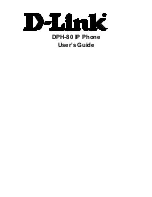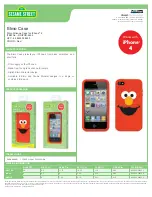
96
4A. Important Safety Information
Specific Absorption Rates (SAR) for Wireless
Phones
The SAR value corresponds to the relative amount of RF
energy absorbed into the head of a user of a wireless handset.
The SAR value of a phone is the result of an extensive testing,
measuring and calculation process. It does not represent how
much RF the phone emits. All phone models are tested at their
highest value in strict laboratory settings. But when in
operation, the SAR of a phone can be substantially less than
the level reported to the FCC. This is because of a variety of
factors including its proximity to a base station antenna, phone
design and other factors. What is important to remember is that
each phone meets strict federal guidelines. Variations in SARs
do not represent a variation in safety.
All phones must meet the federal standard, which incorporates
a substantial margin of safety. As stated above, variations in
SAR values between different model phones do not mean
variations in safety. SAR values at or below the federal standard
of 1.6 W/kg are considered safe for use by the public.
The highest reported SAR values of the SPH-M390 are:
䢇
Head: 1.09 W/Kg
䢇
Body-worn: 1.09 W/Kg
FCC Radio Frequency Emission
This phone meets the FCC Radio Frequency Emission
Guidelines.
FCC ID number: A3LSPHM390.
More information on the phone’s SAR can be found from the
following FCC website:
http://www.fcc.gov/oet/ea/
.
FCC Notice
This device complies with Part 15 of the FCC Rules. Operation
is subject to the following two conditions: (1) this device may
not cause harmful interference, and (2) this device must accept
any interference received, including interference that may
cause undesired operation.
Changes or modifications not expressly approved by the party
responsible for compliance could void the user’s authority to
operate the equipment.
These limits are designed to provide reasonable protection
against harmful interference in a residential installation. This
equipment generates, uses and can radiate radio frequency
energy and, if not installed and used in accordance with the
instructions, may cause harmful interference to radio
communications.
However, there is no guarantee that interference will not occur
in a particular installation.
Note:
This equipment has been tested and found to comply with the
limits for a Class B digital device, pursuant to Part 15 of the
FCC Rules.
Boost SPH-M390.book Page 96 Friday, August 31, 2012 6:30 PM
Содержание ARRAY
Страница 1: ...Online User Guide Boost SPH M390 book Page a Friday August 31 2012 6 30 PM ...
Страница 6: ...Boost SPH M390 book Page 4 Friday August 31 2012 6 30 PM ...
Страница 11: ...Section 1 Boost SPH M390 book Page 1 Friday August 31 2012 6 30 PM ...
Страница 16: ...Boost SPH M390 book Page 6 Friday August 31 2012 6 30 PM ...
Страница 17: ...Section 2 Boost SPH M390 book Page 7 Friday August 31 2012 6 30 PM ...
Страница 81: ...Section 3 Boost SPH M390 book Page 71 Friday August 31 2012 6 30 PM ...
Страница 98: ...Boost SPH M390 book Page 88 Friday August 31 2012 6 30 PM ...
Страница 99: ...Section 4 Boost SPH M390 book Page 89 Friday August 31 2012 6 30 PM ...















































